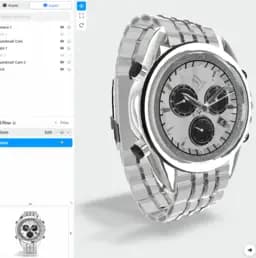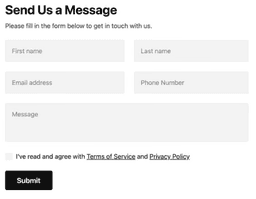WebGPU vs WebGL 2 – Uncovering the Best Features
WebGPU, a cutting-edge API designed to supersede WebGL 2, offers enhanced functionality and utilization of modern GPU hardware. Tailored for creators aspiring performant, portability, and advanced visual effects, WebGPU serves as their ideal choice. However, WebGL 2’s existing familiarity and broader cross-platform support might appeal more to established developers.

Key Differences Between WebGPU and WebGL 2
- WebGPU, designed to supersede WebGL, addresses its limitations and offers better performance through efficient interfacing with modern GPU hardware.
- WebGL 2, a rasterization engine, doesn’t handle 3D math while WebGPU mitigates 3D complexities and provides a more flexible programming model with compute shaders.
- WebGL 2 enjoys broader cross-platform support; WebGPU currently available on ChromeOS, macOS, and Windows, with Android and Linux support planned.
- WebGPU provides robust resource management and clear error messages for troubleshooting, potentially reducing developmental hurdles compared to WebGL 2.
| Comparison | WebGPU | WebGL2 |
|---|---|---|
| Engine Type | API for Graphics | Rasterization Engine |
| Usage | Graphics and machine workloads | Drawing 3D, Requires user’s knowledge of 3D aspects |
| New Programming Possibilities | Yes | No |
| Machine Learning Computation Support | Yes | No |
| Based Platform | Web | GPU |
| Efficiency with Modern GPU Hardware | High | Subject to User’s Knowledge of 3D Aspects |
| Automatic Handling of Sync Challenges | Yes | No |
| Use of Shaders | Compute | Vertex and Fragment |
| Resources Management | Optimal, aided by compute shaders | Depends upon the Developer |
| Performance | Higher if utilized correctly | Depends upon user-provided shaders |
| Release Status | First release in Chrome 113 for Windows, ChromeOS, and MacOS. Further rollouts planned. | Currently Available |
What Is WebGPU and Who’s It For?
WebGPU, the next-gen graphics and computation API, is a rebuttal to the confines of WebGL. It’s an offspring of API stalwarts like Direct3D 12, Metal, and Vulkan. Ingeniously sculpted by W3C’s ‘GPU for the Web’ consortium, it interfaces efficiently with modern GPU hardware. The API comes to life in Chrome 113 on ChromeOS, macOS, and Windows.
The audience? Game developers, mobile studios, and those who aspire for complex visual effects and machine learning computations on browser. Keen on balancing CPU/GPU usage and improving safety, performance, and portability, WebGPU is the emergent trenchant successor to WebGL.

Pros of WebGPU
- Unlocks amazing performance
- Minimal boilerplate code
- Robust support for JavaScript WebGL libraries
Cons of WebGPU
- Still in early stages of development
- Disabled by default as an extension to WebGL
What Is WebGL2 and Who’s It For?
WebGL2 is not a 3D library, but a potent rasterization engine. It draws 3D capabilities, yet the representation of 3-dimensional aspects rests on the user. Its expertise lies in drawing points, lines, triangles as instructed. Reliant on GPU’s might, WebGL2 operates with GLSL code. But remember, it only rasterizes and fosters a depth buffer.
Aimed at developers with a grasp of matrix math, normalized coordinates, frustums, WebGL2 prides itself in immersive, impressive scenes. It constitutes the bedrock for 3D applications. Whether for light reflection or texturing, it anticipates compelling user experiences. But, WebGL2 is a hands-on demander!

Pros of WebGL2
- Capable of building highly interactive 3D applications
- Supports advanced techniques for visually stunning scenes
- Parners with Three.js for rendering 3D applications
Cons of WebGL2
- All 3D math knowledge must be user-provided
- Handles 3D aspects on a superficial level
Code Examples for WebGPU & WebGL 2
WebGPU
A simple example of how to render a triangle in 3D space using WebGPU. Knowledge of basic JavaScript and familiarity with GPU programming concepts such as buffers, shaders, and pipeline states are prerequisites.
// Creating a device
const adapter = await navigator.gpu.requestAdapter();
const device = await adapter.requestDevice();
// Creating a buffer
const vertices = new Float32Array([
1.0, 1.0,
-1.0, 1.0,
1.0, -1.0,
]);
const vertexBuffer = device.createBuffer({
size: vertices.byteLength,
usage: GPUBufferUsage.VERTEX,
mappedAtCreation: true,
});
new Float32Array(vertexBuffer.getMappedRange()).set(vertices);
vertexBuffer.unmap();WebGL 2
A WebGL 2 example that draws a simple square, rotating it using an animation loop. It requires an understanding of JavaScript, particularly the requestAnimationFrame function, and base WebGL constructs.
// Creating square buffer
var squareVerticesBuffer = gl.createBuffer();
gl.bindBuffer(gl.ARRAY_BUFFER, squareVerticesBuffer);
var vertices = [
1.0, 1.0, 0.0,
-1.0, 1.0, 0.0,
1.0, -1.0, 0.0,
-1.0, -1.0, 0.0
];
// Pass the vertices to WebGL
gl.bufferData(gl.ARRAY_BUFFER, new Float32Array(vertices), gl.STATIC_DRAW);
// Draw rotation
var rotation = 0, lastFrameTime = 0;
function rotateAnimation(now) {
rotation += (now - lastFrameTime) * 0.01;
lastFrameTime = now;
renderScene();
requestAnimationFrame(rotateAnimation);
}WebGPU or WebGL 2: Making the Tech Call
Here you stand at the crossroads of tech powerhouses – WebGPU and WebGL 2. With both offering deep-rooted advantages, the choice depends on your tools, needs and technical prowess. Allow us to guide through the labyrinth.
Developers riding the Modern Tech Wave
For those flirting with cutting-edge APIs like Direct3D 12, Metal, Vulkan, WebGPU beckons. It tames modern GPU hardware, sports minimal boilerplate, and puts reduced overhead of JavaScript calls on the table. Yes, it’s in early developmental stages, but the payoff? It might just unlock unmatched performance you’ve been yearning for.

3D Math Maestros
You breathe matrix math and normalized coordinates? WebGL 2 might be your arena. Demanding a hands-on approach rather than ready-to-deploy tools, it’s for the 3D whizz minds keen to craft their own 3D masterpieces. It’s not just a rasterization engine, it’s a plinth for creating immensely interactive 3D applications.

GPU Command Pilots
If you’re dabbling in GPU commands and enjoy steering the ship, WebGPU can be your perfect partner in command. Engineered to cradle the GPU command gurus, this API puts an efficient GPU interface with optimally managed computational resources and automates resource synchronization challenges.

To rookies or those building laid-back applications, WebGL 2 serves well. However, for thos seeking the vanguard of GPU functionality and efficient API interaction, WebGPU stands apart even in its infancy. Its mastery? Touting performance and usability potential that might just break the WebGL ceiling. Make your choice based on skill, need, and the development horizon you aim for.







